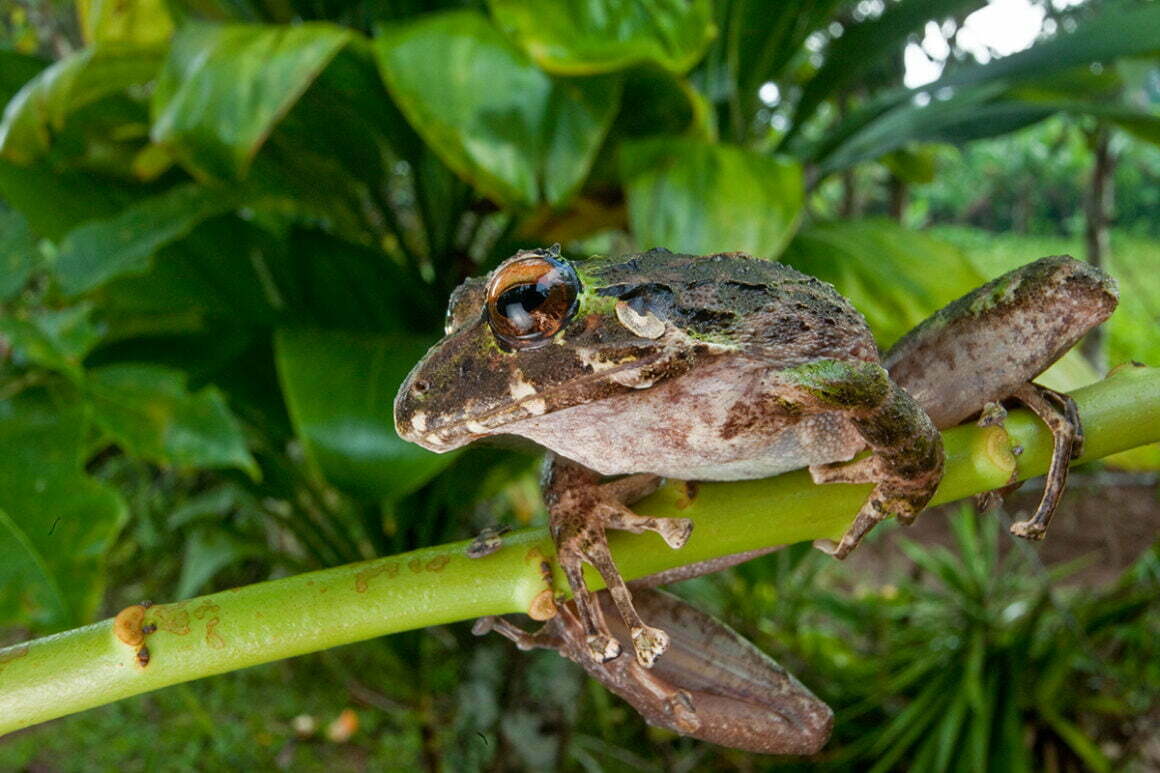During a recent visit to our restoration sites in Grand Bois National Park, we had the pleasure of hearing the unique calls of two endemic frog species, including the Hispaniola Green Treefrog (Boana heilprini) and the Spiny Giant Frog (Eleutherodactylus nortoni). It was not unexpected, yet incredibly exciting to confirm the presence of these species, both of which are listed on the IUCN red list. The Hispaniola Green Treefrog is considered vulnerable, while the Spiny Giant Frog is critically endangered. These two species serve as important indicators of a thriving ecosystem, and we are delighted that our tireless efforts to restore the ecosystem are yielding positive results after two years.
In addition to the frog calls, we also spotted the endemic Tiburon Green Anole (Anolis chlorocyanus) during our visit. Our field team has been making amazing progress in our restoration efforts in the park, including planting thousands of native trees, removing invasive species, and working with the surrounding communities to promote sustainable land use practices. It is all thanks to our generous donors at Re:wild that this progress has been made possible. The triumph of our restoration efforts is not only vital for the long-term well-being of the park’s ecosystem, but also for the surrounding communities, who rely on its resources. Their support has been instrumental in making our work a success.
If you want to hear the sounds of the frogs for yourself, head to our Instagram page @haiti_national_trust, where we have posted a video of the calls. We are proud of the progress we have made in the past two years and excited for the future of Grand Bois National Park and the environment in Haiti as a whole. Our field team’s hard work and dedication have paid off, and we are seeing the positive impact of our restoration efforts. The success of our work is a testament to the importance of conservation and the power of community engagement. We hope that our work will inspire others to take action and protect the precious natural resources that are vital for our planet’s survival.
Overall, the confirmation of the presence of these endemic frog species is a significant milestone in our restoration efforts in Grand Bois National Park. It demonstrates that our restoration efforts are making a difference in the park’s ecosystem, and the success of our work has a ripple effect on the surrounding communities and the environment as a whole. We will continue to work towards our goal of a healthy and sustainable ecosystem in Grand Bois National Park, and we hope to inspire others to join us on this journey.


